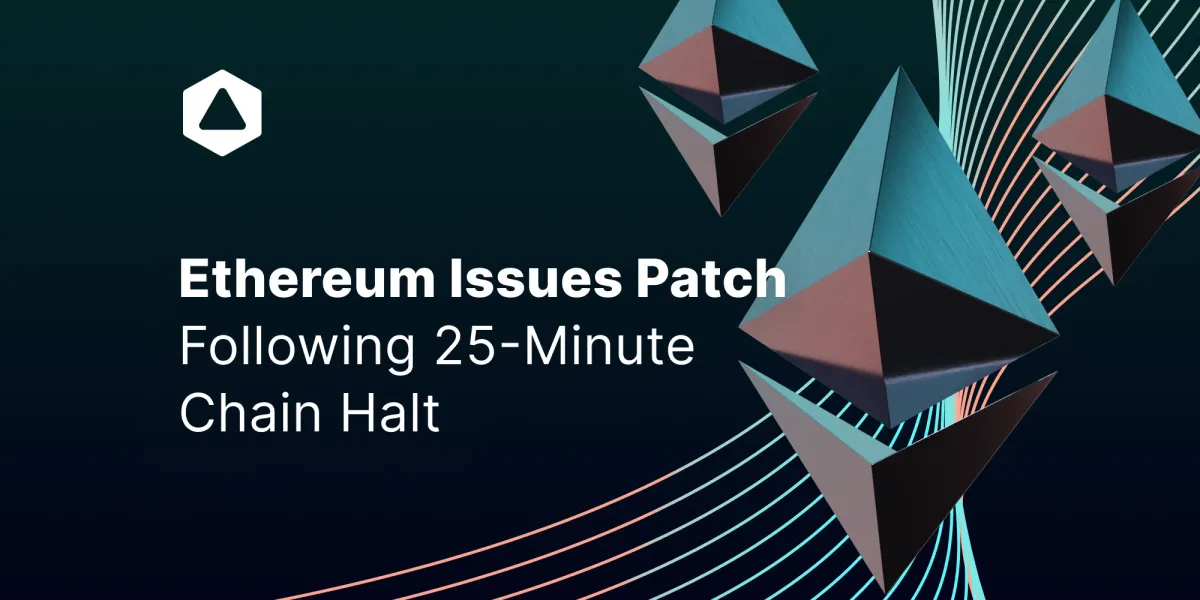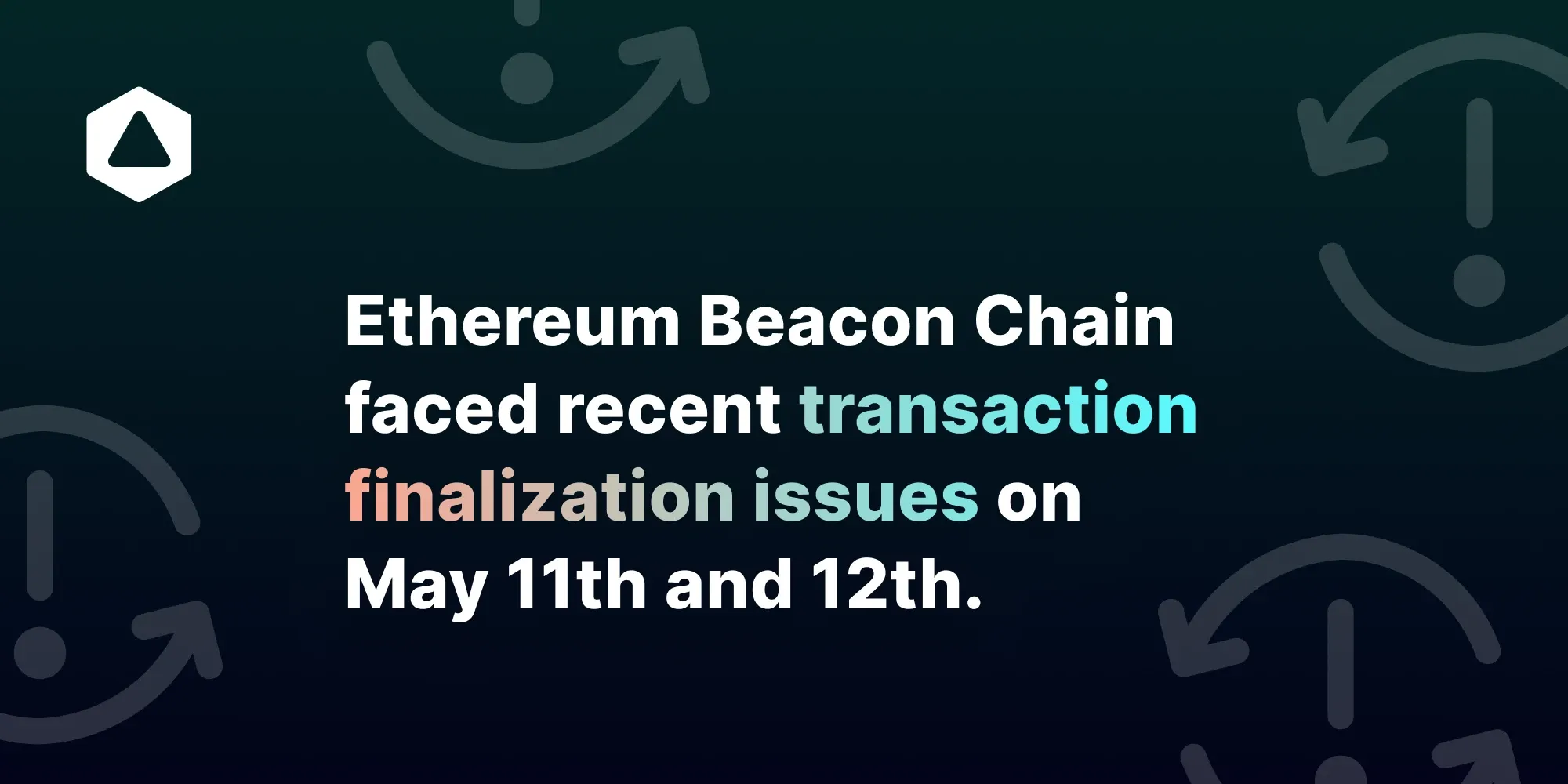Ethereum Issues Patch Following 25-Minute Chain Halt

The Ethereum Beacon Chain has experienced some issues of late, with transaction finalization being halted on two separate occasions on the 11th and 12th of May. New blocks were still being proposed, but unknown issues were preventing proposed blocks from being finalized.
Finality denotes the completion of transactions, and means that the block is fully complete, and cannot be reversed, cancelled, or altered in any way. In other words, the transaction has reached its fully immutable state on chain.
This state of finality is subject to probabilistic transaction finality, which is common to most blockchains, and refers to the phenomenon of a finalized transaction becoming more and more final as more blocks are completed behind it.
The Ethereum Chain Entered an Emergency State

On the dates in question, the Ethereum chain entered what is known as "inactivity leak" mode, a state of being that is designed to ensure that problems causing the finality issues are rectified as soon as possible, with renegade validators getting penalised or slashed outright if required.
According to Ethereum, inactivity leak is a type of emergency state, where certain steps are applied;
- Attesters receive no attestation rewards while attestation penalties are unchanged.
- Any validators deemed inactive have their inactivity scores raised, leading to an additional inactivity penalty that potentially grows quadratically with time. This is the inactivity leak, sometimes known as the quadratic leak.
- Proposer and sync committee rewards are unchanged.
Specifically, inactivity leak was proposed in order to address the issue of recovery of finality in the event that over one-third of validators have gone offline. Evidently a loss of validators of this size has since occurred, and on two seperate occasions.
Ethereum Core Developers Insist that the Issue has been Patched
After investigating the cause of the halts in finality, the Ethereum Core Devs have stated that a patch has been issued and that the problems of finality should not be experienced on the chain any longer.
During the incidents, network latency affected the finality rate of transactions, and issues were encountered by validators who saw a sharp decline in attestations during the affected epochs.
The first pause in finality lasted for 25 minutes, after which finality was restored to the network. The second pause lasted for 8 epochs.
Developers were quick to point out that although finality was halted briefly, there was no damage done on chain, with all attestations being finalized successfully in the end.
Calls for Increased Decentralization
Critics of Ethereum's move to proof-of-stake have pointed to the increased centralization present when using validators over miners and a proof-of-work system.
There are a number of reasons for this, one of which is the high cost of entry to become a validator, at 32 ETH. There are also concerns that groups and institutions could conspire to essentially buy control of the network under the current proof-of-stake model.
Many have reiterated the need for diversity when it comes to validators, and the importance of no one client controlling more than 33% of the network. Such a figure is important to maintain in order to have a secure, robust, and most importantly, thoroughly decentralized Ethereum network.

*Disclaimer: While every effort is made on this website to provide accurate information, any opinions expressed or information disseminated do not necessarily reflect the views of Bitfinity itself.





Comments ()